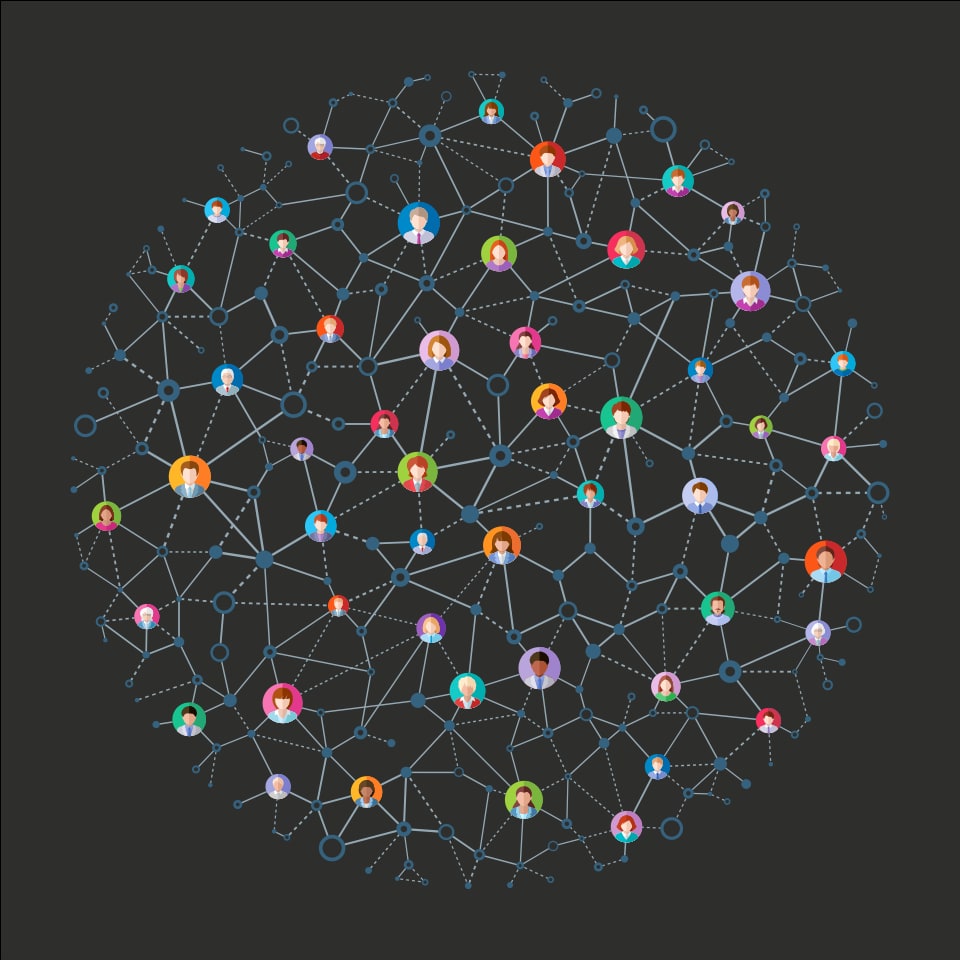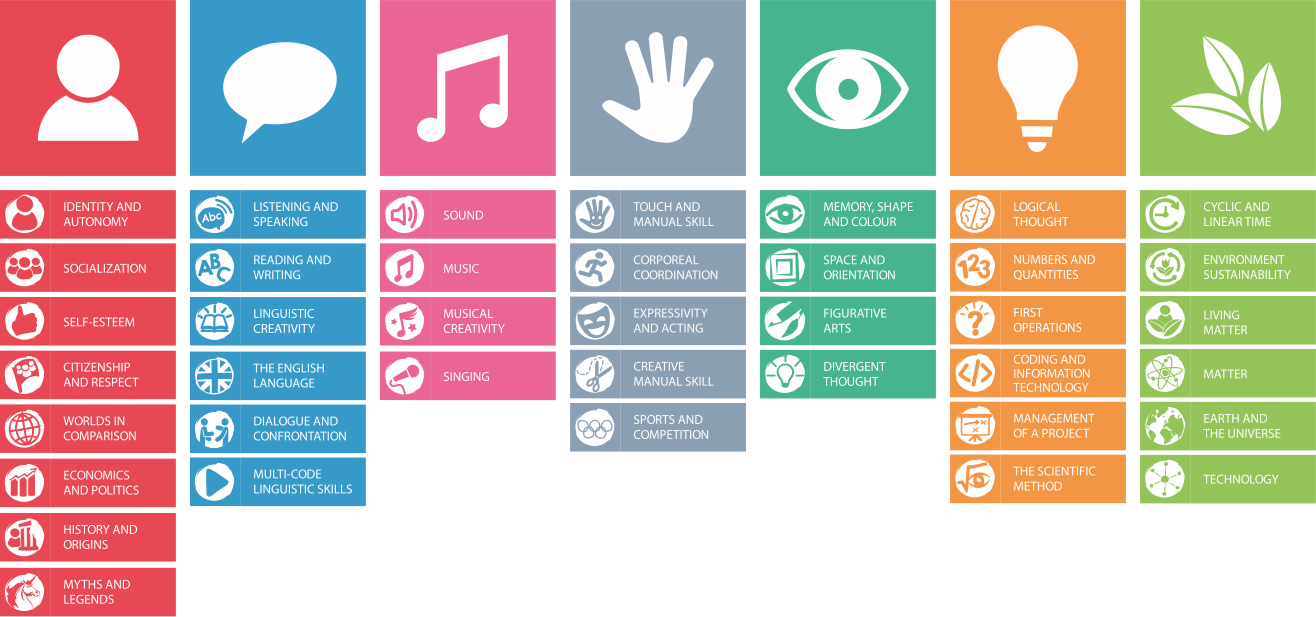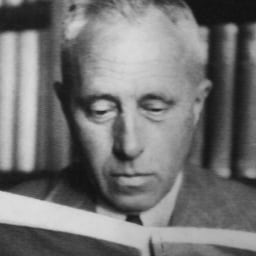



The underlying idea is that children activate not one but multiple forms of intelligence and draw on multiple intellectual resources when learning new skills (as posited in the theory proposed by US psychologist Howard Gardner). Every child is born with a unique combination of natural intelligences: intercepting these at an early age allows the educator to appeal to and develop the most appropriate ways of thinking to build the various skills.
Developing a child's intelligences through the acquisition of a broad range of essential skills, both horizontally, namely primary symbolic and notational systems and the most useful and emerging subjects, and also vertically, focusing on the core concepts of each sphere of knowledge.


Using play as the key means of skill transfer. Play has the potential to be the real driving force of a child’s activities while at the same time offering the possibility to foster both the acquisition of particular skill sets and tapping into specific forms of intelligence.
 Personal
Personal
In this context, American psychologist Howard Gardner discusses two forms of intelligence - intrapersonal and interpersonal, like two sides of the same coin: personal or emotional intelligence. Intrapersonal intelligence is seen in individuals who are aware of their own emotional states, feelings, and motivations. They tend to be decisive in their decision-making, are good at achieving objectives, assessing their strengths and weaknesses and more generally speaking, can manage their life effectively. Evidence of a tendency towards intrapersonal intelligence in children would be the ability to eat, dress and take care of personal hygiene independently, or do homework without having to be reminded by an adult. Interpersonal intelligence is observed in people who are skilled at assessing the feelings, emotions, fears, desires, and intentions of those around them: this kind of person works well in a team and makes a good leader. Sociable children have this inclination, the ones who interact naturally with adults and peers and who propose and organise group activities.
 Linguistic
Linguistic
Linguistic intelligence is typical in people who use a rich and varied selection of words creatively, expressing themselves clearly and relevantly when both writing and speaking. They easily learn new words, are excellent listeners, can distinguish quickly between different linguistic registers and are used to thinking about language. Some infants show this ability when they’re just months old and, given that verbal language is an important means of communication, they very quickly receive recognition for it from adults.
 Musical
Musical
Musical intelligence typically develops in people ‘with an ear’ for music. They have the ability to recognise the pitch of sounds, harmonic structures, changes in tone and timbre, and to reproduce or invent rhythms. Music is important to people with this intelligence, they can’t live without it, hence it becomes a vital feature of their everyday lives! Children with musical intelligence show a natural talent for one or more musical instruments and for song from a young age.
 Bodily-Kinesthetic
Bodily-Kinesthetic
Bodily-Kinesthetic intelligence belongs as much to gymnasts and dancers as to footballers and actors, not to mention goldsmiths and craftspeople; in other words, it is the ability to control and coordinate one's own movements, possessing a wide range of gestures and mimicry and good dexterity. More generally speaking, it is the intelligence of people with good physical control: it can be observed in children with good balance and body coordination, who show a talent for manual tasks, use verbal language well and have an aptitude for sports.
 Spatial
Spatial
People who are strong in visual-spatial intelligence perceive and easily remember both simple and complex shapes, they remember the external features of objects and have a good sense of spatial orientation. Moreover, good visual-spatial intelligence is observed in those who can mentally visualize things and situations without any visual stimuli. This intelligence is recognizable in children who have a good memory for details, who can create figurative compositions and who can easily find their bearings in new places.
 Logical-Mathematical
Logical-Mathematical
Logical-mathematical intelligence is dominant in individuals who can perform computations quickly and solve problems using inductive and deductive reasoning. It is typical in people who have good problem-solving skills, can arrange the world in schematic form, can think about abstract ideas and are able to generalize concepts. Children who are good at performing mental computations, can classify objects, see the relationships between things and express themselves concisely have logical-mathematical intelligence.
 Naturalistic
Naturalistic
Naturalistic intelligence is a particular awareness of nature, the environment and living things. This awareness results in the ability to recognize and classify the many species etc. in the world around us. Scientists have this type of intelligence, and also some members of primitive tribes who can distinguish multiple aspects and features of the natural world. Children with this kind of intelligence show a keen interest in natural phenomenon, animals and plants.